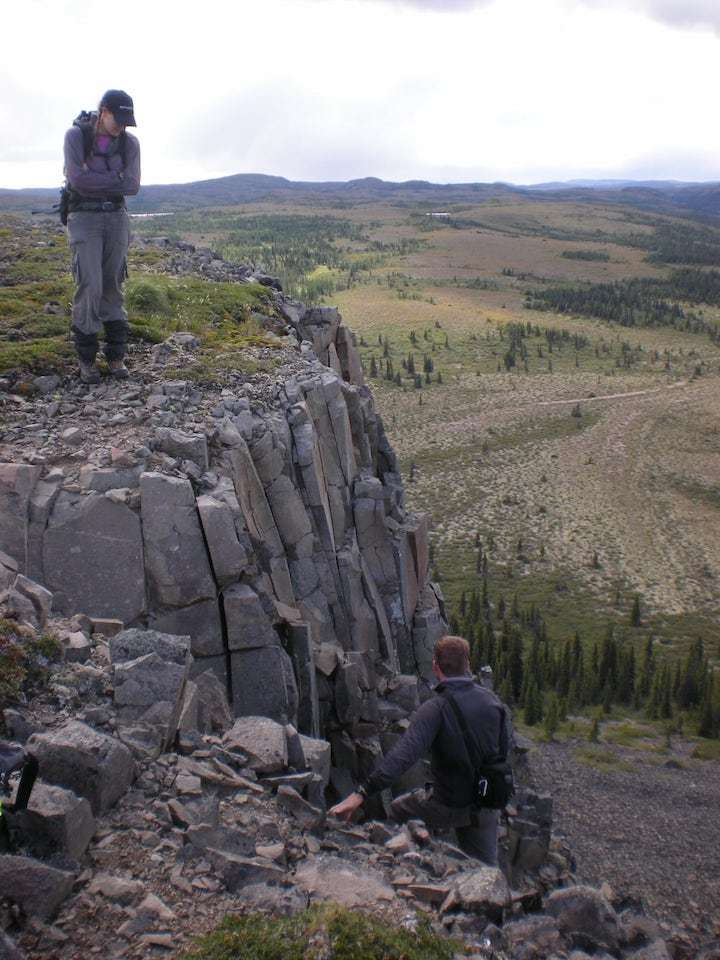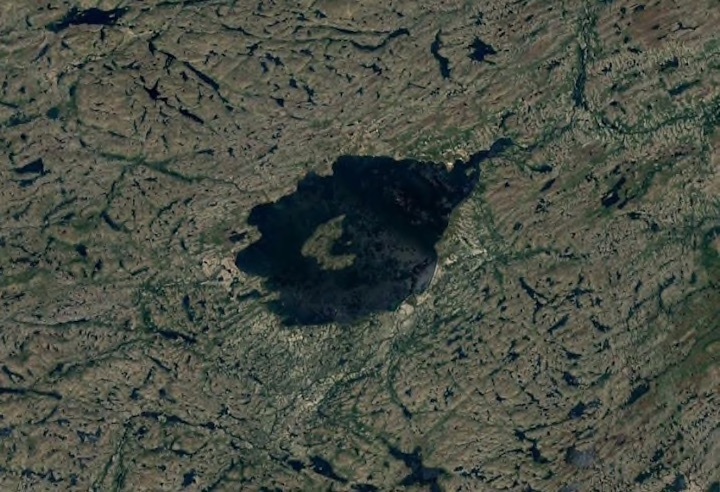4.09.2021
Researchers say the crater has similar properties to the moon and can be a teaching moment
A group of scientists and hopeful future astronauts are landing in Labrador this week to learn about minerals and rocks commonly found on the moon — and in one of the planet's most well-preserved craters.
Gordon Osinski, director of Western University's Institute for Earth and Space Exploration, is leading the field team, which includes Canadian Space Agency astronaut Joshua Kutryk and NASA astronaut Matthew Dominic.
The Mistastin Lake crater was formed about 30 to 35 million years ago — relatively recently, in astronomical terms, Osinski said.
Its rocks, despite their age, have been heat-preserved by the impact from an asteroid or comet slamming into the Earth.
"They're preserved at Mistastin and they're not in many other parts of the world," Osiniski told CBC Radio's Labrador Morning.

At Mistastin Lake, an iPad-based app will be used by the researchers to locate outcrops and take field photographs. (Submitted by Jeffrey Renaud)
It takes about three days to get to the crater from London, Ont., the same time it takes to go to the moon, he said. As well, the crater is made up of similar particles: anorthosite.
"When you look at the moon, you basically see white and dark areas, and those white areas on the moon are also anorthosite," he said. "Here [in Labrador], it's one of the only impact craters in the world that formed in essentially the exact same rock that we also find on the moon."
Anorthosite was first identified when astronauts on the Apollo missions brought back rocks from the moon. Then in the 1970s, Geological Survey of Canada geologists discovered the same rocks in Labrador, proving the crater was formed by meteor impact, not a volcanic eruption, Osinski said.
Osinski first visited the Mistastin Lake crater in 2009, but this will be his first time there with astronauts. His job is comparable to a space mission for the next two weeks.
The field team will train the astronauts in collecting rocks, using tools and team building. On the research side, Osinski and his students will be studying the destructive and beneficial effects of meteor impacts.
Osinski said the tools have highly evolved since the Apollo missions. The team will be using iPads to locate outcrops, take photographs, make sketches and record notes. The team will use drones and lasers to collect aerial photographs and map the area.
"Laser scanning instruments … that could give you a really accurate 3-D model of the outcrops and the rocks that we'll be looking at," Osinski said.
The team will also be using laser-induced breakdown spectroscopy to instantly analyze the chemistry of rocks.
"Typically you would collect a sample, bring it back to your lab and you might get information on the chemistry weeks or even months later," he said. "With this particular instrument, in real time, we might be able to fine tune our hypotheses or select the best samples again to bring back."
Osinski hopes soon a Western University satellite could be launched and instruments could be sent with rovers going to the moon and Mars. He said the ultimate goal is to have astronauts once again walking on the moon and help them from behind the scenes.

A Google Image aerial shows the full Mistastin Lake Crater. (Google Images)
Quelle: CBC
